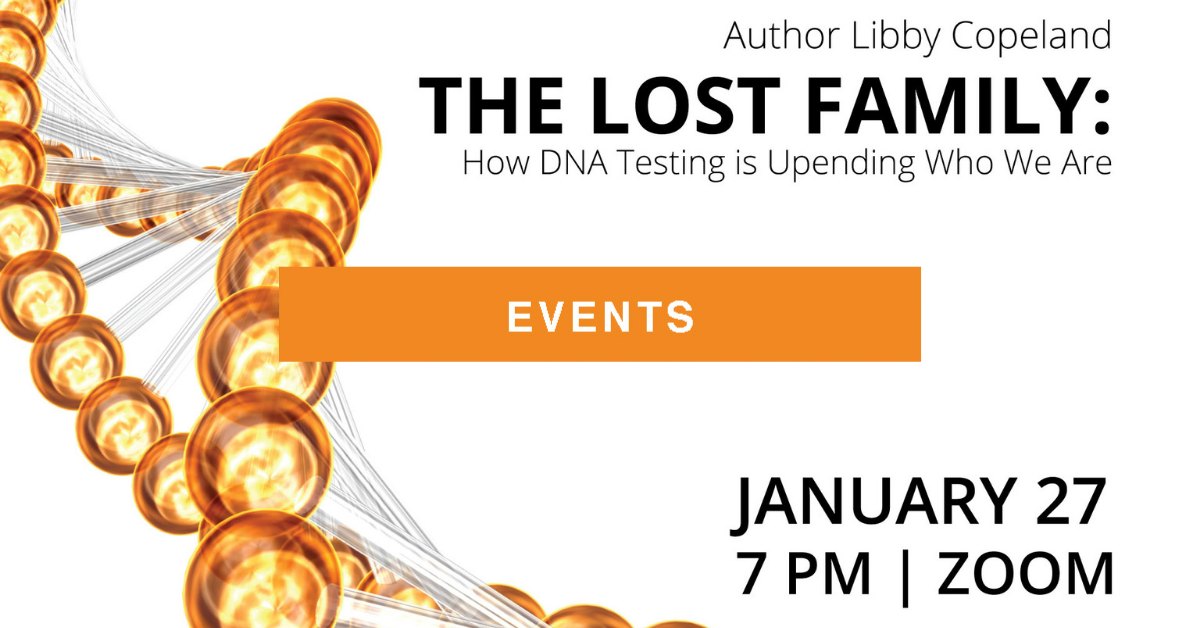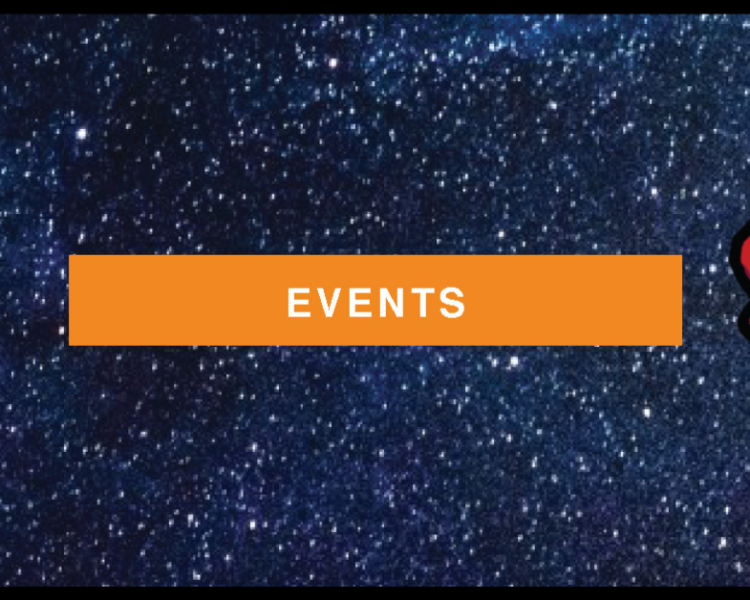The Lost Family: How DNA Testing is Upending Who We Are by Libby Copeland was published in March 2020 by Abrams Press. Join the author on Zoom on January 27 at 7 PM for a discussion of her book.
What drew you to write about at-home DNA testing?
As a journalist, I write about the intersection of science, culture, and human behavior. In 2017, I wrote a story for The Washington Post about the family surprises generated by home DNA testing. The article focused on the riveting tale of a woman named Alice Collins Plebuch, who took a DNA test and found that half of her DNA was not what she expected. She thought that her family was of Irish, Scottish, and English heritage and learned instead that half of her heritage is Ashkenazi Jewish from Eastern Europe. The explanation for this mystery was surprising and unusual, and it took her two and a half years of intensive genetic genealogy work to unravel. The article generated an enormous response from readers, who emailed me by the hundreds to share their own experiences with DNA revelations. It became clear that the phenomenon of home DNA testing and its implications deserved an in-depth look. Alice’s story now frames the deeper dive that I’ve taken into this phenomenon in The Lost Family.
In the prologue of your book, you mention that you’ve had your DNA tested. What did you learn from that experience?
I did not have any dramatic revelations in the sense of Alice’s story or of other surprises that I explore in The Lost Family. But I did discover two second cousins of whom we had not previously known: one in Sweden on my father’s side; the other, on my mother’s side, born in Ukraine and now living in New York City. The fascinating thing about the cousin born in Ukraine is that he represents a branch of the family we didn’t know had survived pogroms and World War II. It’s extremely unlikely we ever would have found either of these cousins without DNA testing.
According to your book, at-home DNA testing is more popular in the United States than anywhere else in the world. Why do you think Americans are so drawn to this?
Thirty-five million people have taken a home DNA test—the majority of them American. That’s an extraordinary development in the 20 years since home DNA testing was launched as a way to facilitate the searches of amateur genealogists. That level of engagement reflects not only home DNA testing’s emergence as a popular gift but also American fascination with where we come from. The vast majority of Americans have ancestors who arrived here in recent centuries and have little information about their more distant heritage. That distinguishes us from many other nations whose populations have been more stationary. That creates among Americans a greater desire to know what home DNA testing offers to reveal.
What’s the role of Utah in the story of DNA testing and genealogical research?
Utah has played—and continues to play—a pivotal role in the evolution of genealogical research and of home DNA testing. One cannot talk about genealogy in America without talking about the integral role of the Latter-Day Saints community. That’s why, early in my research, I traveled to Salt Lake City to visit the Family History Library. It’s the biggest genealogical research facility in the world, and it’s astonishing. It was pivotal to my research and helped me understand what was possible. Utah is also at the center of the home DNA testing industry, because Ancestry, the largest for-profit genealogy company in the world, is based in Lehi, where MyHeritage, another industry leader, has offices. I was able to tour Ancestry’s headquarters as well. The industry will continue to grow, and Utah will continue to benefit from that growth.




